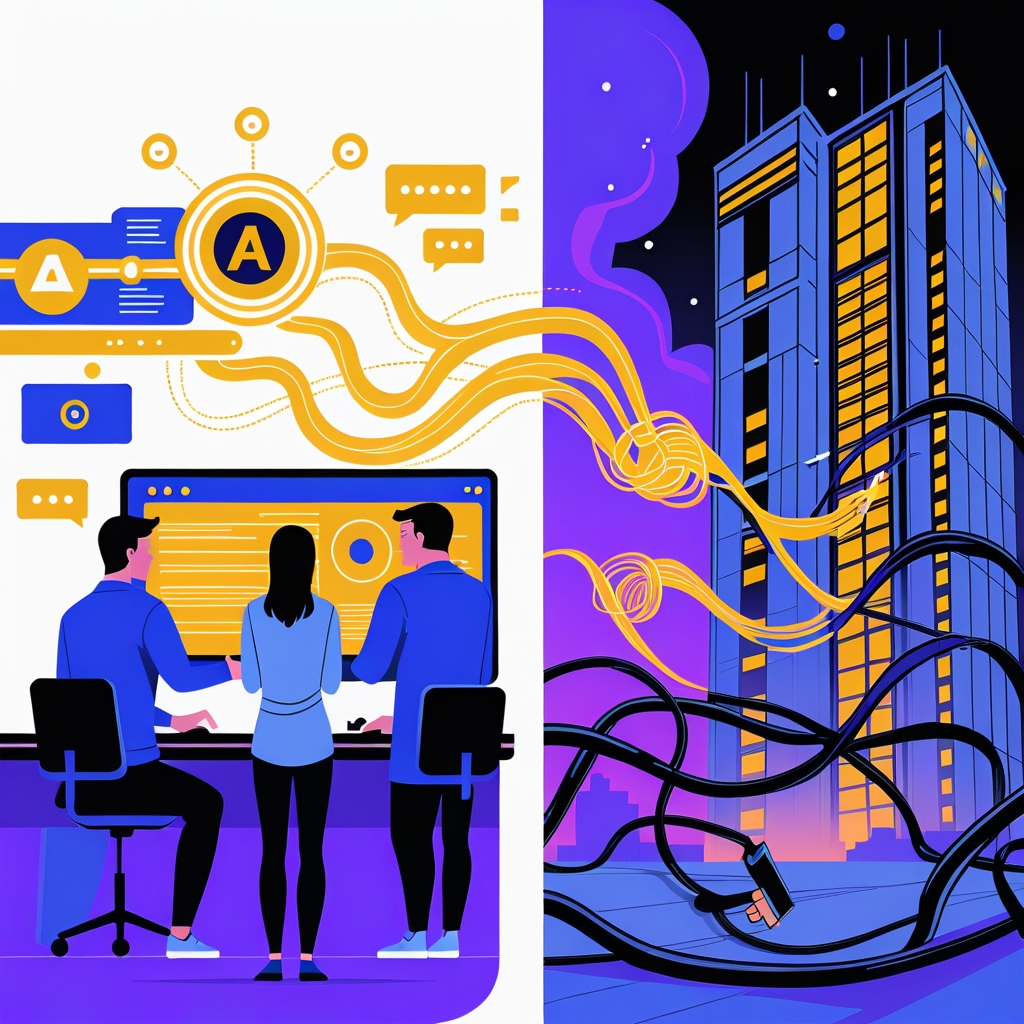The New Competitive Battlefield
In 2025, the agency landscape has undergone a seismic shift. Where enterprise firms once dominated with massive budgets and development teams, a new generation of micro-agencies and solopreneurs are now winning clients with something more valuable than scale: agility. The secret weapon? White-label AI platforms that transform service delivery while preserving brand identity. This isn’t just automation—it’s a complete reimagining of how small teams compete in the AI era.
Why Traditional Scaling Models Are Breaking
Small agencies face a brutal paradox: clients demand enterprise-level sophistication, but growth requires hiring more staff—a move that erodes margins and complicates operations. According to a recent industry survey, 68% of micro-agencies (1-10 employees) report losing bids to larger competitors despite stronger client relationships. The gap wasn’t in expertise—it was in technological capacity.
Traditional approaches to bridging this gap have failed:
– Custom AI development costs $150K+ with 6-9 month timelines
– Off-the-shelf tools lack customization and dilute brand identity
– Hiring specialists creates unsustainable overhead for project-based work
The White-Label Advantage: Enterprise Power, Boutique Packaging
White-label AI solutions represent the perfect convergence of three market trends:
- Democratized AI Infrastructure: Cloud-based platforms now deliver GPT-5 level capabilities through simple APIs
- No-Code Customization: Business owners can rebrand interfaces and configure workflows in hours, not weeks
- Outcome-Based Pricing: Pay-per-result models align costs with client value creation
Consider Sarah Chen, a 3-person marketing agency founder. By implementing a white-label AI platform:
– Reduced campaign strategy time from 40 to 8 hours per client
– Increased service capacity by 300% without hiring
– Commanded 27% higher pricing by offering ‘Predictive Campaign Intelligence’ as a premium service
Her secret? A platform that lets her input client data, generate Fortune 500-caliber reports branded as her own, and deliver results competitors can’t match on speed or sophistication.
The Implementation Playbook: From Tool to Transformation
Simply adopting white-label AI isn’t enough. Winning agencies execute these three strategic moves:
1. Service Layer Integration
Don’t just automate tasks—reimagine your service architecture. Top performers:
– Bundle AI outputs into proprietary methodologies (e.g., ‘Brand Pulse Intelligence’)
– Design human-AI handoff points that enhance (not replace) their expertise
– Create tiered service packages where AI handles baseline execution
2. Client Experience Engineering
The magic happens when clients don’t know they’re interacting with AI:
– Customize output templates to match your brand voice
– Build in strategic commentary fields where you add human insight
– Develop client onboarding that positions AI as “your proprietary advantage”
3. Value Quantification Framework
Enterprise clients demand ROI proof. Successful agencies track:
– Time-to-insight reduction (e.g., “Strategic recommendations delivered in 24h vs industry avg 7 days”)
– Opportunity capture rates (e.g., “AI-identified upsell pathways driving 35% additional revenue”)
– Client effort scores (e.g., “83% reduction in client data requests”)
The Tipping Point: Why 2025 is Different
This isn’t the first AI wave—but it’s the first where the technology meets business readiness:
– Quality Threshold: Current platforms deliver reliable, brand-safe outputs
– Integration Maturity: Seamless connections with CRM, analytics, and communication tools
– Market Expectation: 81% of SMB clients now expect AI-enhanced services (per Gartner 2025)
The true differentiator isn’t the technology itself—it’s how small agencies weaponize its flexibility. While enterprise competitors wrestle with legacy systems and committee approvals, micro-agencies pivot in hours, embedding AI into their unique value proposition.
Your Move: Staying in the Game
The white-label AI revolution isn’t coming—it’s here. Agencies that treat it as merely a cost-saver will miss the bigger opportunity: becoming indispensable strategic partners through accelerated insight delivery. The question isn’t whether you can afford to implement these solutions—it’s whether you can afford not to when your competitors are already doing it.
The future belongs to those who leverage technology to amplify human expertise, not replace it. In the battle between scale and agility, the nimble now hold the advantage.
